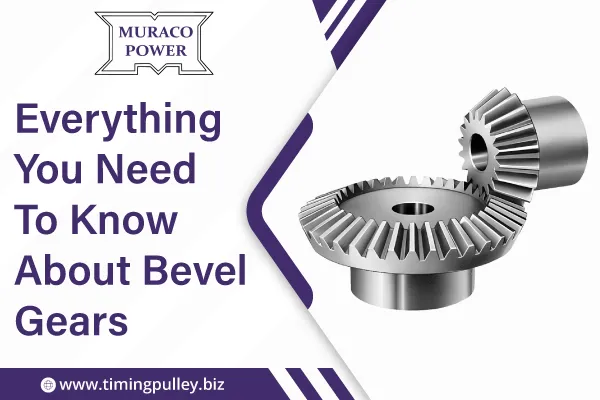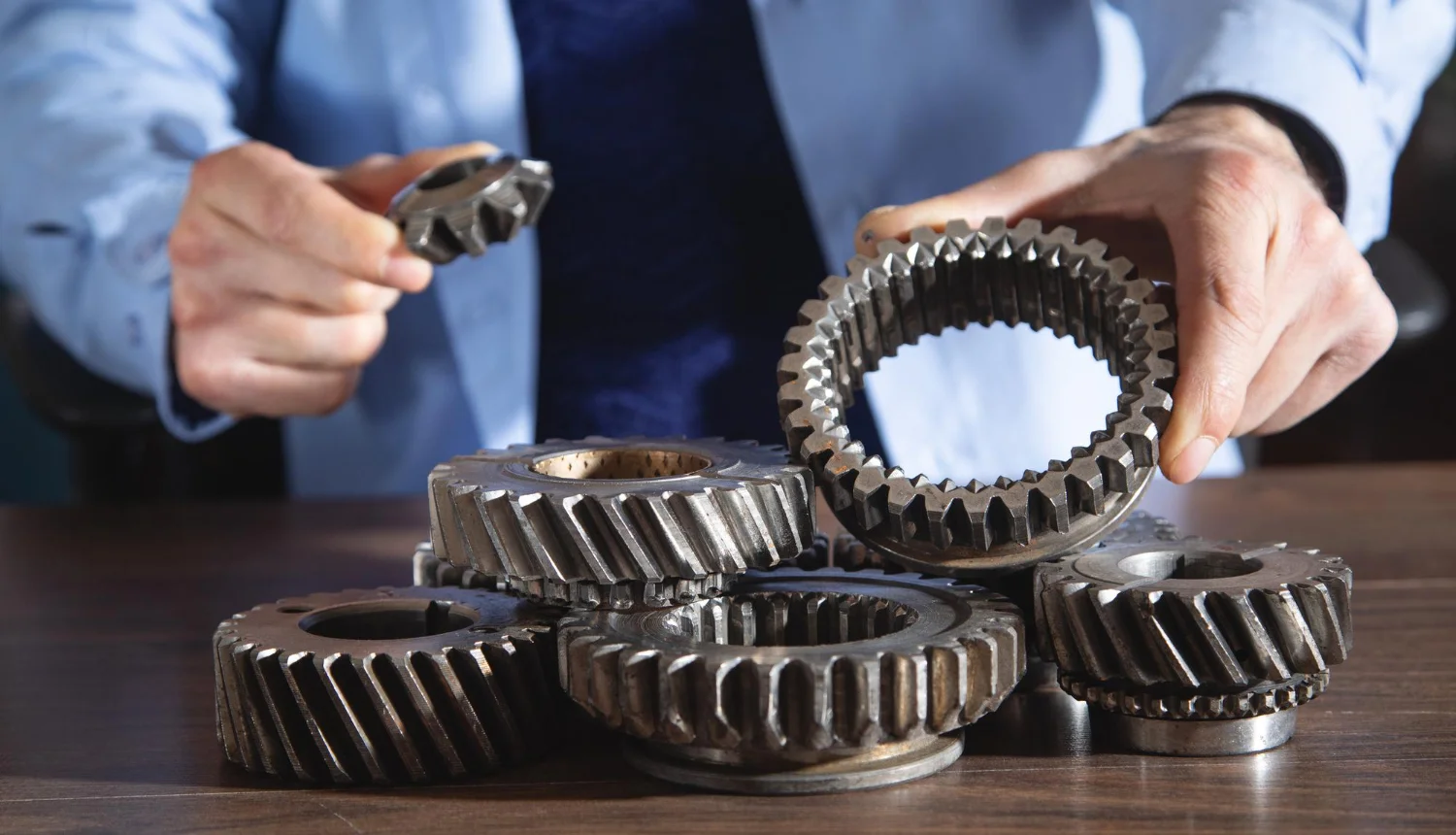
| We Offer | |
|---|---|
| Everything You Need To Know About Bevel Gears | |
| Call Now | +91-958-682-3032 |
| +91-958-682-3032 | |
| Eligible Region | India |
| Category | Bevel Gear |
| Payment Methods | Cash, UPI, Net Banking |
Bevel gears are vital components in mechanical systems, responsible for transferring rotational motion between intersecting shafts, usually at a 90-degree angle. These gears are crucial in industries like automotive, aerospace, and industrial machinery. Bevel gears enable smooth power transmission and ensure efficient operation of various systems, from vehicle differentials to high-speed machinery. In this post, we'll discuss the many varieties of bevel gears, such as straight, spiral, and hypoid gears, their uses, and the numerous benefits they provide. Additionally, we'll discuss the importance of regular maintenance to ensure optimal performance and longevity. Understanding how bevel gears work and their benefits will help industries improve the reliability and efficiency of their equipment. Whether you're in manufacturing or any other sector, bevel gears are indispensable for smooth, noise-free, and efficient power transmission.
What Are Bevel Gears?
A bevel gear is a mechanical gear used to transfer rotational force between two shafts that are set at an angle to each other, typically 90 degrees. Unlike traditional gears that rotate in parallel alignment, bevel gears are designed to mesh with other gears at an angle, allowing them to change the direction of movement or torque. They are an essential part of systems where direction change is necessary, such as in vehicles, industrial machinery, and power transmission systems.
Bevel gears come in various shapes and configurations, each designed for different applications and operating conditions. The teeth of bevel gears might be straight, a spiral, or hypoid, depending on the system's needs. Their unique design ensures smooth and efficient transmission of power, especially when torque and high-speed operation are involved.
Types of Bevel Gears
There are several types of bevel gears, each with its distinct characteristics and applications. Understanding the differences between these types can help you choose the best one for your specific needs.
Straight Bevel Gears
Straight bevel gears are the simplest and most basic type of bevel gear. Their teeth are cut straight and are aligned radially. These gears are typically used in applications where the shafts meet at a 90-degree angle and require a straightforward, low-cost solution for transferring power. While straight bevel gears are effective for smaller applications, they tend to generate more noise and vibration compared to other types.
Spiral Bevel Gears
Spiral bevel gears feature teeth that are helical and cut at an angle to the gear axis. The spiral design allows for a smoother meshing of the teeth, resulting in quieter and more efficient operation. These gears are utilized in industries that need more torque and smoother functioning, such as automobile differentials and high-speed equipment. Spiral bevel gears offer a higher load capacity than straight bevel gears and are more durable in the long term.
Zerol Bevel Gears
Zerol bevel gears are similar to spiral bevel gears but have teeth that are cut at a zero-degree angle to the gear's axis. This unique design helps eliminate the axial thrust associated with spiral bevel gears while maintaining smooth and quiet operation. Zerol bevel gears are used in high-precision applications where noise reduction and efficiency are critical. They are very useful for industrial machines and power transmission structures.
Hypoid Bevel Gears
Hypoid bevel gears are similar to spiral bevel gears but feature a different design that allows for the shafts to be offset rather than intersecting directly. This unique design offers better torque capacity, smoother operation, and quieter performance than traditional bevel gears. Hypoid bevel gears are commonly used in automotive differentials, where the gear shafts are offset to provide efficient power transfer and smooth operation.
Applications of Bevel Gears

Bevel gears are used in a wide range of industries, from automotive to aerospace, because they offer efficient power transmission and are capable of handling high torque and speeds. Some of the key applications include:
Automotive Industry
In the automotive industry, bevel gears are used in differentials, where they change the direction of power between the engine and the wheels. Bevel gears are essential for transmitting power to the axle shafts and ensuring smooth and efficient vehicle movement.
Aerospace Industry
In the aerospace industry, bevel gears are used in various aircraft systems, including control mechanisms and propulsion systems. These gears help change the direction of the rotating force and ensure smooth operation in high-speed and high-torque environments.
Marine Industry
Bevel gears are commonly utilized in the shipping industry motors and propeller systems. They are essential for transferring power from the engine to the propellers, allowing for efficient and reliable operation in marine vessels.
Industrial Machinery
Bevel gears are widely used in industrial machinery, such as conveyors, pumps, and compressors. They are often found in systems where there is a need to change the direction of power transmission while maintaining high torque and speed.
Benefits of Bevel Gears
Bevel gears offer many advantages, making them perfect for a variety of industries demanding efficient power transfer.
Smooth and Efficient Power Transmission
One of the primary benefits of bevel gears is their ability to transfer power smoothly and efficiently. The design of the teeth allows for gradual engagement, reducing the impact on the system and ensuring minimal energy loss.
High Load Capacity
Bevel gears, particularly spiral and hypoid gears, have a high load capacity, making them ideal for heavy-duty applications. Their design enables them to withstand high torque without compromising performance or durability.
Quiet Operation
Bevel gears, especially spiral bevel gears, operate more quietly compared to other types of gears. The angled teeth allow for smoother meshing, reducing noise and vibration in the system, which is essential for many industrial and automotive applications.
Factors to Consider When Choosing Bevel Gears
Selecting the right bevel gear for your application involves considering several factors, such as size, speed, load capacity, and operating conditions.
Size and Weight Requirements
The size of the bevel gears is critical in determining their suitability for your application. Consider the available space and weight requirements of the system to ensure proper fitting and efficient operation.
Operating Speed
The operating speed of the system will determine the type of bevel gear required. Higher speeds may require spiral or hypoid bevel gears to maintain efficiency and reduce wear and tear.
Operating Conditions
The operating conditions, such as temperature, environment, and load, will also influence the choice of bevel gears. For example, hypoid bevel gears may be necessary in applications with high load capacity and demanding environments.
Maintenance and Care for Bevel Gears
Proper maintenance is required for the longevity and performance of bevel gears. Here are some key maintenance tips:
Regular Inspections
Routine inspections help detect any wear and tear, misalignment, or other issues with bevel gears. Proper detection of issues can save money on repairs and prevent downtime.
Lubrication
Bevel gears should be properly lubricated to reduce friction and prevent wear. Using the correct lubricant helps maintain smooth operation and prolong the lifespan of the gears.
Replacement of Worn Parts
If any parts of the bevel gear system are worn or damaged, it is important to replace them promptly. Failing to do so can lead to system failure and more expensive repairs down the line.
Common Issues with Bevel Gears
Bevel gears, like any mechanical component, may experience some issues over time:
Wear and Tear
Continuous operation can lead to the gradual wearing of teeth, which affects the efficiency of the bevel gear system. Regular inspections can help detect wear and prevent further damage.
Noise
Excessive noise may indicate that the bevel gears are misaligned or damaged. Proper lubrication and alignment can reduce noise and improve the overall performance of the system.
Misalignment
Misalignment of the bevel gears could give rise to different wear and decreased productivity. Ensuring proper alignment during installation and maintenance is crucial for optimal performance.
Who is the Leading Manufacturer of Bevel Gears?
Muratech Engineering Company is a renowned Bevel Gears manufacturer in India, specializing in the production of high-quality bevel gears for various industries. With years of experience in precision engineering, the company ensures that all bevel gears are designed for optimal performance, reliability, and durability. Muratech Engineering Company offers a wide range of bevel gears that cater to applications in automotive, industrial machinery, robotics, and more. Their products are known for smooth operation, high load capacity, and extended lifespan, making them the go-to choice for businesses seeking reliable and efficient power transmission solutions. As a trusted Bevel Gears Manufacturer in India, Muratech Engineering Company is committed to delivering top-notch products that meet the highest standards of quality and performance. Whether you require bevel gears for high-speed or heavy-duty applications, they provide tailored solutions to meet your specific needs.
Conclusion
Bevel gears are essential components in power transmission systems in a variety of sectors, including automotive, aerospace, and industrial machinery. Their smooth, efficient, and quiet operation makes them an essential component in many mechanical systems. By understanding the different types, benefits, and applications of bevel gears, businesses can make informed decisions to optimize their systems. Proper care and servicing are important for the longevity and performance of bevel gears. As technology continues to evolve, advancements in bevel gear design will likely enhance their capabilities even further.
For more information on bevel gears, contact Muratech Engineering Company today at +91-958-682-3032 or email muracopower@hotmail.com
